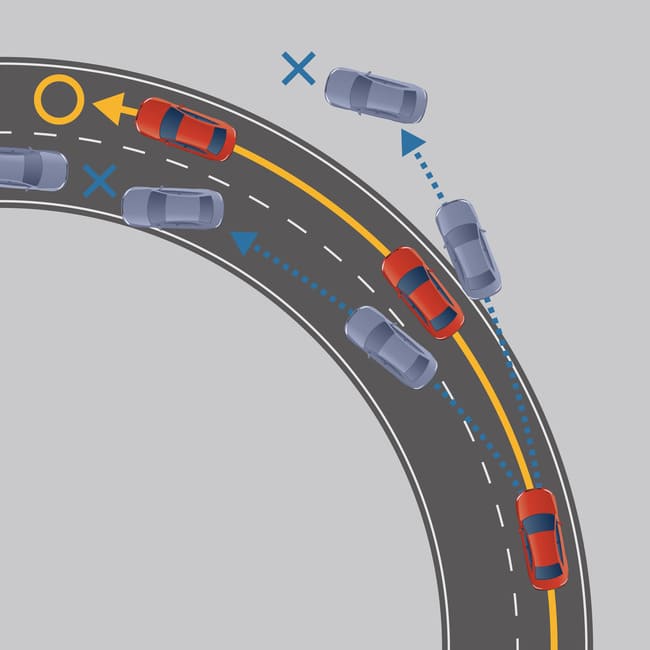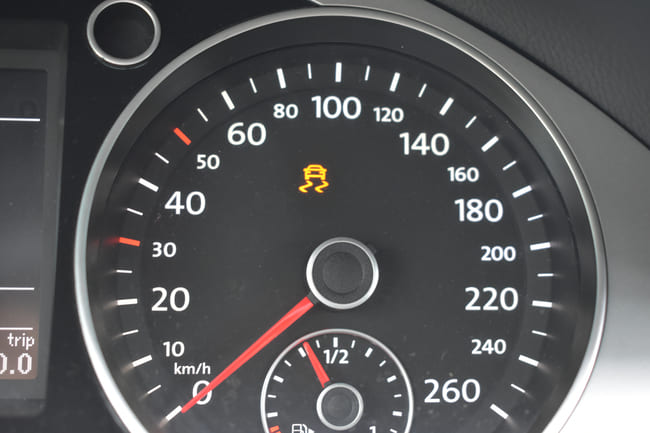
Many modern cars have an electronic stability program, ESP for short. However, most drivers are not even aware of when this control actively intervenes and what purpose it actually pursues. Therefore, with this article we want to explain the basic principles and the ESP function in your car. We start with a basic definition of the term and its meaning before we deal with how it works. Finally, we also show you which problems and defects can generally occur and how you can (have) eliminate them or avoid them.
Contents
The definition of your ESP-System

When talking about the so-called ESP in connection with passenger cars, it is generally about the so-called electronic stability program. Roughly speaking, this is one of the most important modern active safety systems and is now very widespread. All vehicles up to 3.5 tons newly registered from November must have this safety system in the EU. Previously, it was sufficient if the car only had an anti-lock braking system, or ABS for short, on board. But how important is ESP for your car? Basically, this safety system has the task of preventing your car from skidding as best as possible. This is achieved by monitoring driving behavior and comparing it with the steering commands given by the driver. If a larger deviation is determined, the ESP uses the targeted braking of individual vehicle wheels to stay in lane or correct it. So you could say that the ESP steers your car by braking.
Which components belong to an ESP-system?
To understand what your car's ESP is, you should first know its components. Similar to the ABS, which is also mandatory, the ESP in the car also uses speed sensors on the individual vehicle wheels. Based on this, the system knows how fast the individual wheels are turning and whether the interventions of the system are having the desired effect. But for a correct reaction, your ESP needs a large number of other sensor data. The steering wheel position is recorded with the help of the steering angle sensor. In addition, there is an acceleration sensor for the vehicle's lateral acceleration (speaks when your car slips away), but also the so-called yaw rate sensor to detect whether your vehicle is making unwanted turning movements (keyword: skidding). Other components include interfaces to other vehicle systems, such as the engine and transmission, a complex control unit and a pedal-independent hydraulic pump for targeted braking of individual vehicle wheels.
How does your ESP work in the car?
Now follows an explanation of the function of the ESP in the car now that you know all the relevant ESP sensors. This system is always active when the ESP symbol is active in the car. Otherwise you usually do not notice the interventions. This is also an important difference to your ABS, because when it is active, the „stuttering“ of the brake pedal. If the ESP lamp in your car lights up continuously, this may indicate a defect in your car's ESP. A brief flashing of the ESP character when starting, however, is usually normal.

The interventions of your ESP system are based on the control unit calculating how your vehicle should behave with the corresponding steering wheel position. If the computer detects a deviation from the actually measured values or the vehicle track, it intervenes accordingly. This is achieved by the additional, second brake hydraulic pump. This enables your ESP to specifically slow down the wheels without pressing the pedals.
What is the ESP in your car and what can it do?
Ultimately, this active safety system, which is now required by law for modern vehicles, serves to prevent accidents. It often intervenes when the driver has misjudged a situation, his ability or the behavior of his own car. Therefore, you should always take the ESP light on in the car as a warning sign that you are driving your car at its limits. This system works most effectively in preventing your car from skidding and skidding. Should an accident nevertheless occur, the ESP can often at least reduce the severity of the accident. While in the event of a loss of control without ESP, the side of the vehicle usually collides with an obstacle, the vehicle is kept on track better, so that the front of the vehicle is more likely to collide with the obstacle. The front of the vehicle is usually much better protected than the side of the vehicle, from which all vehicle occupants benefit.
Defects of your ESP in the car
Almost all components, especially the individual sensors, are absolutely necessary to ensure the correct functioning of this vehicle system. Therefore, when the vehicle is started, the control unit also checks whether all subsystems are working correctly. If even small deviations from the standard are detected, your ESP is usually deactivated. This is also indicated to you by the corresponding warning lights. In this case, the vehicle error memory must be read out, because it is noted there which event caused the ESP to be switched off.

Such work and the subsequent repairs should be left to your specialist workshop, because the experts who have been trained in the handling and repair of such complex systems work there. You should keep in mind that a defective ESP always represents a safety risk, just like a stuck brake caliper or overheating of the brake discs.
Conclusion
If your car has an ESP, you can consider yourself lucky, because this can significantly improve driving safety. As described, the aim is to ensure that the individual wheels of your car can always have a good grip on the road surface. Individual wheels can be braked so that your car stays in its lane. This means that your car is less likely to oversteer or understeer.
A tip from CarTipsandmore: In winter it can be worth switching off the ESP when driving up a snowy mountain want. The reason for this is that you need the maximum engine power to move forward as effectively as possible. However, if the ESP determines that your wheels do not have good grip, it reduces the engine torque, which is transmitted to the individual vehicle wheels. However, this car wheel slip is normal on snowy mountains, so disabling electronic stability control just for the climb can help. You should then reactivate it immediately if possible.
